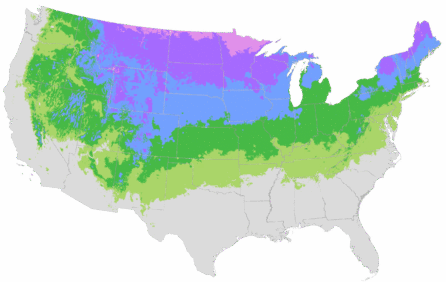You're growing in this Zip Code: 43215
Change LocationDiscover Plants for Your Area
Ginger Wine® Ninebark
Physocarpus opulifolius 'SMNPOBLR' PP #28,695; CPBRAF
We no longer grow this plant
Be Inspired: How to Use this Plant
| Bloom Time | Late spring to early summer. |
|---|---|
| Deciduous/Evergreen | Deciduous |
| Special Features | Attractive Bark, Dramatic Foliage Color, Easy Care, Improved Pest and Disease Resistance, Waterwise, Benefits Birds |
| Problems/Solutions | Drought Tolerant, Very Wet Areas |
| Growth Rate | Moderate |
| Flower Attributes | Flowers for Cutting, Showy Flowers |
| Patent Act | Asexual reproduction of plants protected by the Plant Patent Act is prohibited during the life of the patent. |
| Landscape Use | Border, Container, Hedge, Privacy Screen |
| Design Ideas | This is a beautiful native shrub that is ideal for the Pacific Northwest and other moist areas prone to acidic soils. Its great fall color and unique winter bark display makes it a good background plant for beds and borders. It's a natural as a single specimen for sunny spots of woodland or wild gardens. Excellent choice for all native and wildlife gardens where seasonal changes and habitat are crucial. A highly colorful and versatile addition to larger landscapes. |
| Flower Color | White |
| Foliage Color | Multicolored |
| Companion Plants | Feather Reed Grass (Calmagrostis); Boxwood (Buxus); Spirea (Spiraea); Potentilla (Potentilla); Blue Spruce (Picea); Weigela (Weigela) |
| Care Instructions | Thrives in average, slightly acidic, well-drained soils. Best color in full sun. Avoid extreme heat and humidity; prefers cool regions. Water deeply, regularly during first growing season to establish an extensive root system; reduce frequency, once established. Blooms on old wood; if desired, prune after flowering to shape. |
| Lore | The Latin name Physocarpus comes from the Greek words physo (bladder) and karpon (fruit) in reference to the red bladder-shaped fruits that appear after flowering. The common name of Ninebark comes from the appearance of the bark which is peels away in layers. The inner bark was brewed into a pain reliever and remedy for many other maladies by Native American tribes within this plant's range. Roots were sometimes steam cooked and eaten and plants were used as charms to cause bad luck. |
| Bloom Time | Late spring to early summer. |
|---|---|
| Deciduous/Evergreen | Deciduous |
| Special Features | Attractive Bark, Dramatic Foliage Color, Easy Care, Improved Pest and Disease Resistance, Waterwise, Benefits Birds |
| Problems/Solutions | Drought Tolerant, Very Wet Areas |
| Growth Rate | Moderate |
| Flower Attributes | Flowers for Cutting, Showy Flowers |
| Patent Act | Asexual reproduction of plants protected by the Plant Patent Act is prohibited during the life of the patent. |
We no longer grow this plant
We no longer grow this plant
Buy Online
This plant is not available to purchase online.
We no longer grow this plant. For replacement suggestions, check out the plants “You May Also Like” below.
About Us
We have been pioneers and craftsmen in the art of growing plants for nearly
100 years. Since our founding in Southern California by Harry E. Rosedale, Sr.
in 1926, we have been absolutely dedicated and obsessed with quality.
We have been pioneers and craftsmen in the art of growing plants for nearly 100 years. Since our founding in Southern California by Harry E. Rosedale, Sr. in 1926, we have been absolutely dedicated and obsessed with quality.








